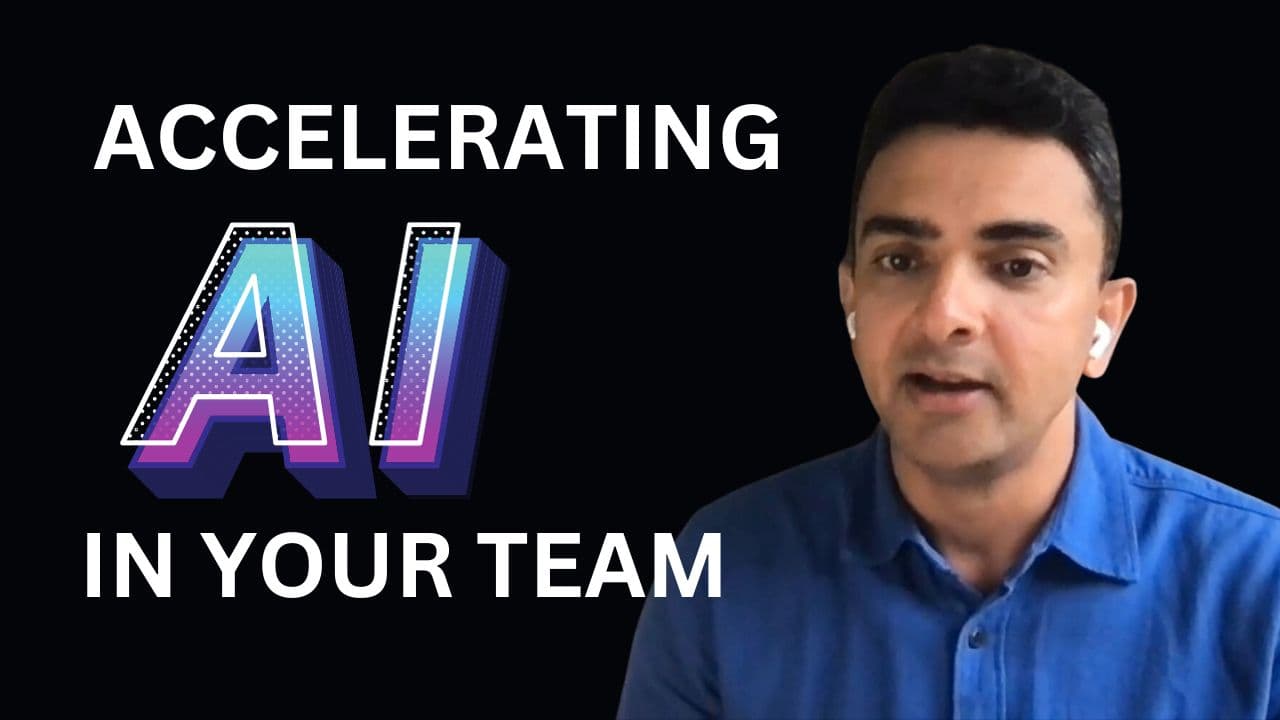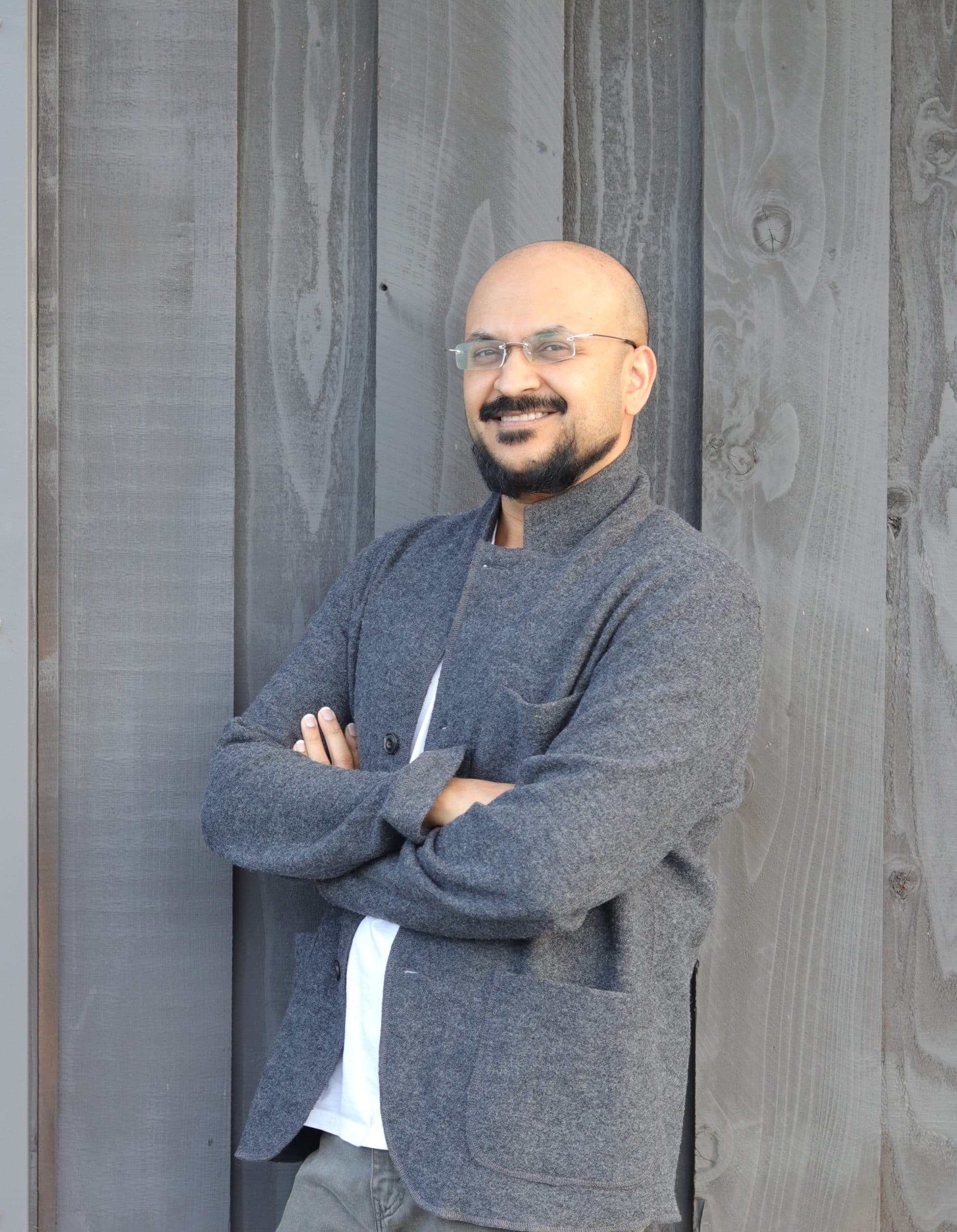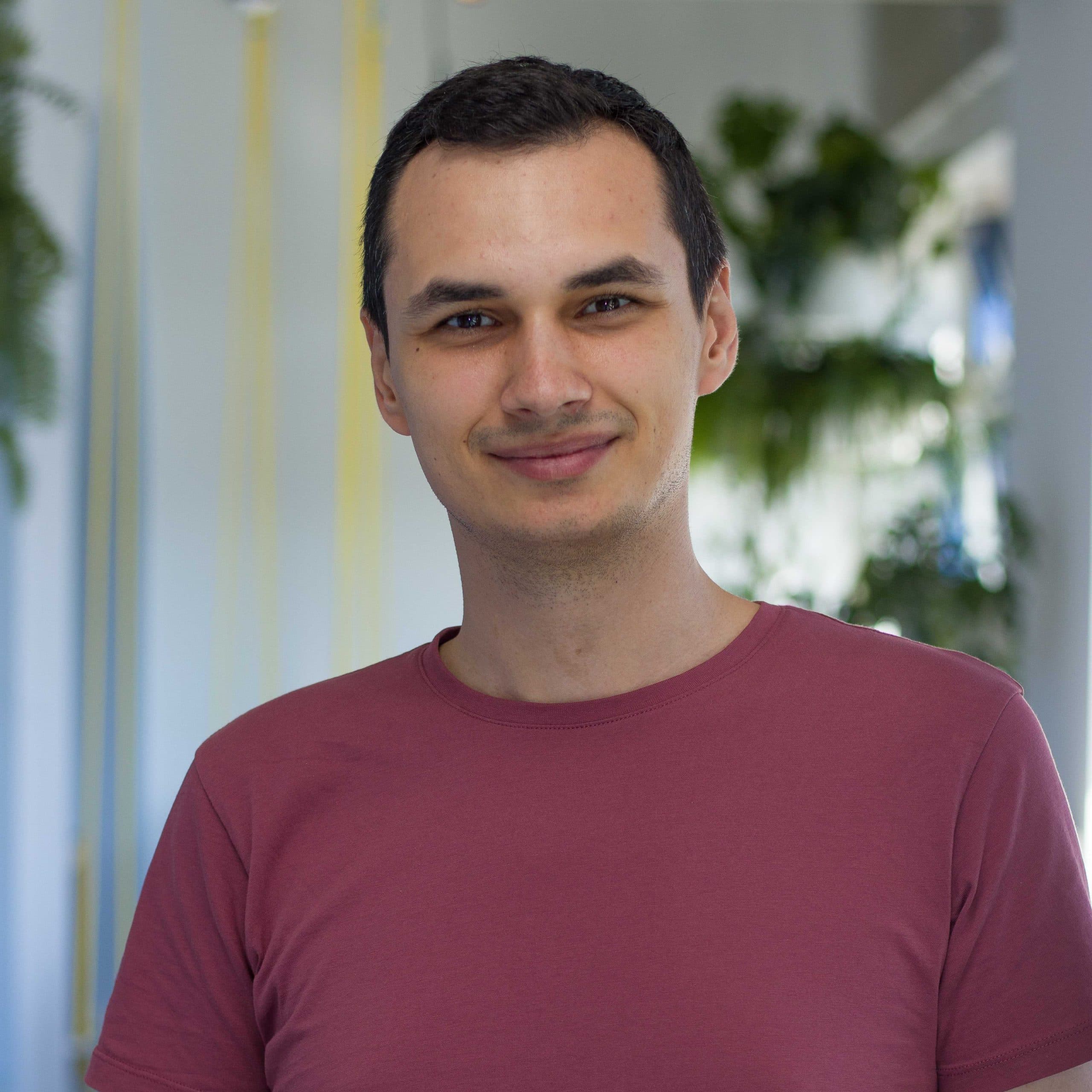Interview with Natasha Vinnik, Senior Engineering Manager at Google
Published on May 14, 2018
10 min read


Location: Mountain View, CA.
Current role: Senior Engineering Manager at Google for Places API. I am building a team that’s focusing on providing Places data to enterprises and 3rd party developers.
What is your background and how did you get into management?
I moved to America from Russia after high school in 1999. It was the middle of the tech boom and I quickly joined a startup company, Live365, that focused on allowing anyone to create music stations. I worked as a build/release engineer before leaving to go to Berkeley to get my bachelors in Electrical Engineering and Computer Science. After graduation, I worked at Yahoo as a Software Engineer while completing my Masters from UCLA at the same time. It was at Yahoo when I first got a chance to lead big projects. I enjoyed working with other engineers and figuring out how to manage the work in order to deliver projects on time. In 2012, I joined Box. Box was rapidly growing and it gave me great opportunity to develop my technical leadership skills. I enjoyed sharing my knowledge and helping other engineers be successful. I liked to play a matching game of finding impactful tasks that engineers enjoyed working on and that helped them grow.
Even though I did enjoy technical leadership and was being recognized at performing well at it, I was actually hesitant move into a management role. I was afraid I would forget the technical knowledge that I built out and I would forget how to be an engineer. Nevertheless, I decided to give it a try and I made it a priority to stay technical. I became a manager of a small enterprise engineering team that focused on building paid features for Box customers. During my time at Box I grew the team from just a few engineers to a department of about 20 people and different sub-teams. It was not an easy task to grow a team to that size while at the same time delivering high priority projects. I ended up really enjoying engineering management but also always made sure that I left time to do technical work as well.
At the end of 2017, I decided to challenge myself and do something different so that’s how I joined Google to focus on building a new engineering team.
What are the biggest challenges that you face?
There are a few common challenges that engineering leaders face. Whenever you are working on a feature, it is essential to understand customer base. Ideally, you want to avoid building one-off solutions that will only work for one customer but wouldn’t be applicable to other customers without a significant redesign. It is also challenging to find a right balance between a strong technical foundation that can easily be extendable but not over designing for potential future use cases. It sounds pretty simple -don’t complicate things. But in reality it’s challenging to spot those extra complexities.
When I was at Box, I was the main technical lead for the Relay project, project that was co-developed between Box and IBM. Two companies were coming together to build a new workflow product offering. We were all very eager to jump into the implementation phase to get the project going. I was the main technical lead of the project and I needed to make some critical technical decisions about architecture that required thorough evaluation of solutions. I wanted to make sure we didn’t rush into the implementation until architectural decisions were made. In addition to technical complexities, we faced some challenges from the process and organizational perspective.
Different companies operate differently in terms of processes, meeting cadence, project tracking, etc. It is an interesting challenge to figure out how to make a joint project execution effective across two companies. Do we need to keep each other in the loop? Do we need to keep each other in the loop about everything? For example, Box engineering team was located in one office and all the stand-up meetings were done in person in late mornings when everyone was in the office. Some of the teams we worked with at IBM were located in different timezones and all meetings were usually pretty early in the morning. The hardest part was to realize that we did need to align our processes prior to jumping into the execution. After that realization, we were able to go over how each team operates and come up with the way we can work well jointly. It did not mean we had to change everything, it just required a few adjustments. After a few iterations, we were able to come up with the process that worked for both parties and helped our project execution. We ended up having leads sync at a time that everyone can attend and once a month we would bring the core team together in person for design discussions. We also identified communication and project tracking tools that both companies could use. It helped to make sure everyone was on the same page without unnecessary status meetings.
What is your approach to hiring?
In terms of hiring, there are few important things. I believe technical foundation is important for hiring engineers but this is not the only criteria. What I like to focus on is to build a diverse, engaged, and effective team. I pay a lot of attention to the culture and also people’s passion and drive.
I really believe that engineers excel if they’re passionate about what they’re working on and they feel supported and challenged. But also every person is different, so it’s interesting to look into what drives them. That is a question I frequently ask candidates, what are they passionate about and what do they really want to work on. I look into how to align their passion and their drive with what we’re working on.
In terms of cultural fit, I strongly believe that one person can change the whole team, so I evaluate how people collaborate with others, how they work within the team, and how they can handle different technical opinions. It is common to have technical design discussions with multiple approaches and not a clear right solution. Being able to work with a team to hash out different designs and proposing something that works for everyone is an essential skill, especially for more senior engineers.
That’s three things I focus on: the technical foundation, passion and drive, and the cultural fit.
What is your advice for managers who are just starting out?
One thing I’ve learned from my experience and also from helping others to grow into management role is that being a tech lead and being a manager are not the same. Those two roles look deceivingly similar, but they are not and switching from one to the other is challenging. When becoming a manager, it is no longer about you making the right technical decisions it is about you guiding your team to make decisions. Your role is now about supporting the team versus your individual contribution. If you end up making a decision and the team didn’t feel like they owned it, they will tend to rely on you to make other decisions too and it becomes inefficient. Thus, leaning towards asking questions instead of giving all of the answers and letting the team reach those decisions can create a strong sense of ownership.
Another one I think is around time management. As a manager, we tend to play different roles and then our time becomes very fragmented. This is something that could become overwhelming at first and could feel like you can’t get anything done. I think good time management and prioritization techniques will help a lot. It is also important not to forget about the people you manage, and make sure you are available to them and have consistent one-on-ones. At the end, it feels pretty satisfying to be able to play different roles, juggle multiple projects and GSD.
The last piece of advice is about building a peer network. After switching from individual contributor to management, the aspect of a team changes too. Your team becomes not the team you manage, but managers and leaders of the organization. I recommend to start building those relationships right away. It helps to get to know your peers and have people you trust to bounce ideas off of.
What is your work day like and how do you manage your time, and emails, since you mentioned time management as a big challenge?
Natasha: Yeah, that’s a good question. I have a to-do list, I’m pretty big on to-do lists. I have a weekly to-do list that’s digital, and then I do written, actually, handwritten daily to-do lists. I remember things better when I write them down, so I tend to use a pencil and actually write things down.
I try to start the day by having three items I want to focus on in the day on the to-do list. Things will definitely come up and I just write them down and then after I finish one, I quickly look at my list to see if anything urgent comes up. But really try to focus on those three items.
I used to try different digital tools for the to-do lists, but I ended up focusing too much on finding the best tool versus actually focus on what I’m trying to get done, so I’ve switched back to just doing a handwritten daily to-do lists.
Another technique I use is blocking off time on my calendar. There’s this concept about maker’s time versus manager’s time, I think that’s Paul Graham’s concept.
Vidal: Yes. [http://www.paulgraham.com/makersschedule.html]
Natasha: I create what I call “work blocks,” instead of maker’s time. I block off my calendar to make sure I have some blocks where I have a chance to really work on something for a longer period of time. This is also a good time to think about strategy, team organization, review architecture and just work. So usually at the beginning of the week I review my calendar and I put a few ‘work blocks’ throughout the week, sometimes in the mornings. And then I try to cluster my meetings so that there’s more of a meeting time and there’s more of work blocks throughout the week. I accept that some days there might not be much of a maker time and it is okay. During the meetings, I try to make sure I am really present so that I can unblock my team and make meetings productive.
Vidal: That’s really great. You said you had a weekly to-do list and you have the daily to-dos. Is it different what you put on the weekly to-do list? Is it like a checklist for the week, or what is the difference?
Natasha: It is more like a running to-do list. At the beginning of the week, I look into what I have there and prioritize it and remove what is not important anymore. This list tends to have bigger items to work on. So it is more of prioritized running to-do list. But I update it weekly.
What is a personal habit that contributes to your success?
Flexibility. I adjust to different situations and different people I work with. I tend to be open to new ideas, take them, try them and iterate on them. I believe every person in the team is different and I take this opportunity to learn from everyone and adjust to what the team needs. Being flexible is the habit I rely on a lot.
Networking. I’m pretty big on networking. I like to share experiences and learn from others. I still keep in touch with a lot of people I used to work with, my peers, sponsors, mentors, engineers I worked with and managers I had. I share my experience and learn from theirs. I think those conversations provide an environment of being able to get a different perspective on situations from people you are not directly working with. I find it very valuable.
Early morning running. It is important to have personal time in our busy lives so that you have a chance to reset or figure out what to focus on. I usually work out or run early in the mornings and prepare myself for my day and it gives me a good way to clear my head and start the day strong.
Could you share an internet resource or tool that you can’t live without?
Notebook and a pencil. Not an internet resource, but super useful. I’m left-handed, so I write everything with a pencil. I remember things better, as I mentioned, when I write them down so a notebook and pencil are my best tools.
I also use Google Calendar a lot. I use it for my professional life as well as my personal life. I think it’s a good tool for coordination and time management. It definitely helps me to stay organized.
In terms of management resources, there’s one blog I follow called Be Leaderly (http://www.beleaderly.com/). It’s a weekly snippet of interviews and tips for leadership. They usually share different stories and different outlooks and perspectives. They’re short, so I definitely can find time to read them.
If you could recommend one book to managers, what would it be and why?
I would recommend Five Dysfunctions of a Team. It talks about the importance of a team, and how to focus on building an effective team. And I also like the style of the book because it first presents a relatable narrative then gives specific principles to follow which makes those principles easy to remember.
Another good book is “It’s Your Ship: Management Techniques from the Best Damn Ship in the Navy“. It talks about ownership and how to foster ownership and accountability. This book is great for everyone, not just managers.
Where can we go to learn more about you?
LinkedIn https://www.linkedin.com/in/nvinnik/ , a little bit on Twitter (https://twitter.com/nvinnik) and Medium https://medium.com/@nvinnik. The best way is actually going to local events I go to. I frequently attend women in tech events in the Bay Area. It is always fun to meet people, network and share experiences. You can always reach out to me personally through LinkedIn.
This series asks engineering managers to share their experiences with the intent of helping other engineering managers learn and improve. Have someone you want to see featured or questions you think we should ask? Contact me.





